October 20, 2017ANALYSIS OF NOVA SCOTIA'S CONSUMER PRICE INDEX FOR SEPTEMBER 2017 In Nova Scotia September 2017, annual consumer price inflation (year-over-year growth) was 1.3 per cent, below the national average of 1.6 per cent. Monthly consumer prices were up 0.5 per cent in Nova Scotia and 0.2 per cent in Canada.
Within Atlantic Canada, PEI (+2.4%), New Brunswick (+1.7 per cent) and Newfoundland and Labrador (+1.4%) had higher inflation than in Nova Scotia. On July 1, 2016, the provincial component of the harmonized sales tax (HST) increased in both Newfoundland and Labrador and New Brunswick. In Prince Edward Island, the provincial component of the HST was increased effective October 1, 2016.
All other provinces experienced positive annual inflation in September.
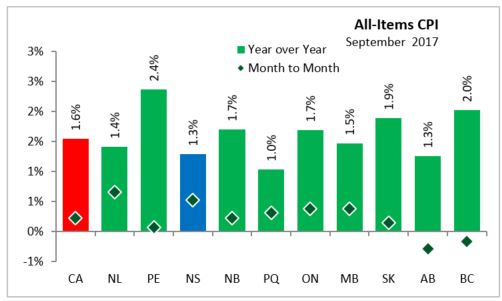
Nova Scotia's annual consumer price inflation (year over year growth in CPI) excluding food and energy rose 1.0 per cent in September, below the national rate of 1.2 per cent. Price level gains for this index were largest in PEI (+2.0 per cent), and lowest in Quebec (+0.4 per cent). On a monthly basis, Nova Scotia's index excluding food and energy increased 0.5 per cent.
The main contributors to the monthly (September 2017 vs. August 2017) NS CPI movement:
Gasoline (+8.5%)
Tuition Fees (+5.3%)
Cereal Products (excluding baby food) (-3.7%)
Dairy Products (-3.8%)
The main contributors to the annual (September 2017 vs. September 2016) NS CPI movement:
Gasoline (+12.6%)
Traveller accommodation (+10.0%)
Internet Access Services (-8.3%)
Non-alcoholic beverages (-11.1%)
The CPI for food in Nova Scotia declined 1.1 per cent year-over-year with a 0.5 per cent decrease month-over-month. CPI growth in food (year over year) declined in all Atlantic provinces. Nationally, annual food prices increased 1.4 per cent.
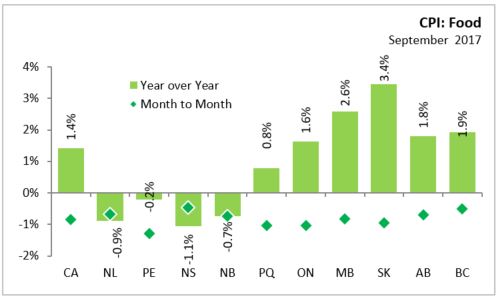
The Nova Scotia energy index increased by 7.4 per cent compared to a year ago. Energy price growth was smallest in Manitoba and Ontario on a year over year basis. Nationally, the index was up 4.9 per cent. Energy prices saw the largest increase in Quebec and in the Maritimes.
Major Components for August 2017
The following table shows the price increases specific to Nova Scotia for the major components of the CPI this month:
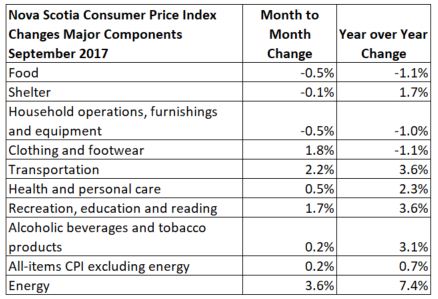
Long Run Trends
The All-Items CPI annual inflation rate for Nova Scotia was below Canada's in September 2017. Since July 2014, Nova Scotia's annual inflation has been below the Canadian average except for three months in 2016: January, September and November. While month to month movements in the indices can be different, over time they generally follow the same overall trend.
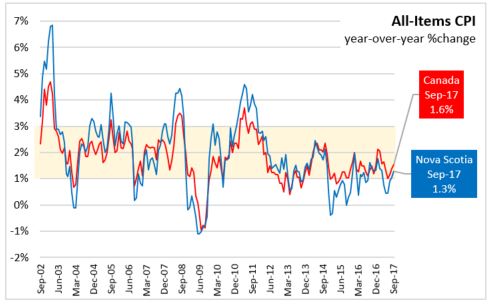
Annual inflation for the CPI excluding food and energy was lower for Nova Scotia (+1.0 per cent) than for Canada (+1.2 per cent).
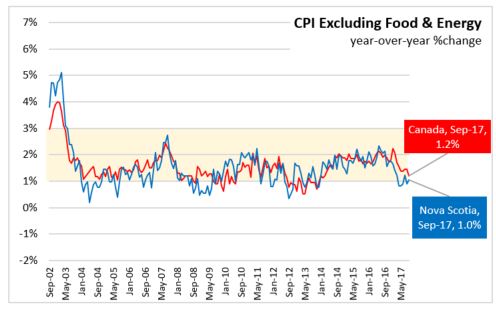
Bank of Canada's preferred measures of core inflation
Compared with September 2016, CPI-Common rose 1.5 per cent, CPI-Median rose 1.8 per cent, and CPI-Trim rose 1.5 per cent in Canada. All-items CPI excluding eight of the most volatile components as defined by the Bank of Canada and excluding the effect of changes in indirect taxes (formerly referred to as CPIX) rose 0.8 per cent year over year in September 2017.
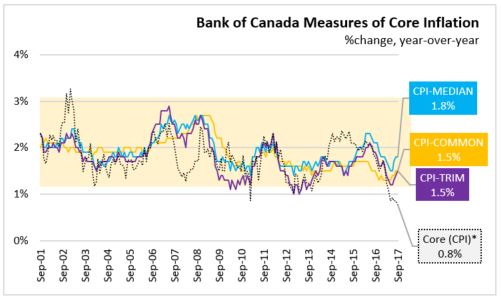
Appendix Tables
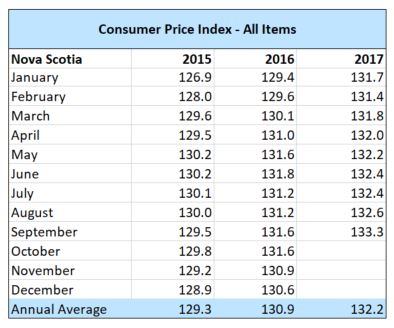
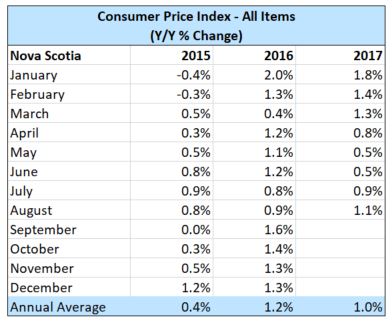
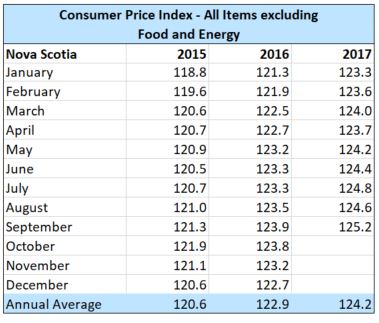
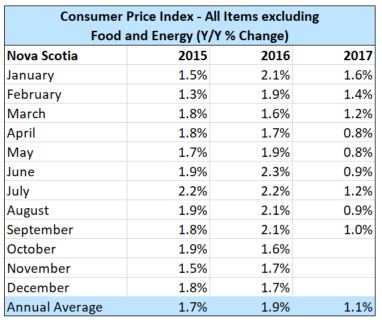
Source: Statistics Canada CANSIM Tables 326-0020 , 326-0023